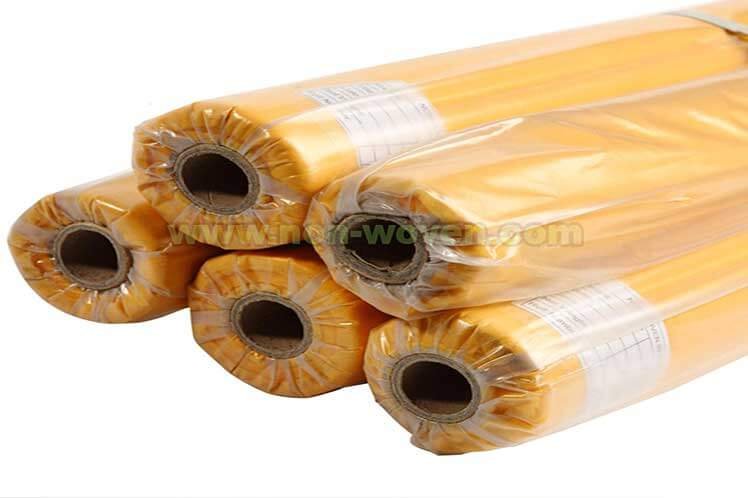Introduction
Most people don’t know what a PP non woven fabric roll is, let alone how it’s made. This fabric roll is made from a process called melt-blown extrusion. The raw material, which is usually polypropylene, goes through a die where it is extruded into fine fibers.
These fibers are then blown onto a cooled surface where they solidify and form a mat. This mat is then rolled into a fabric roll. The fabric roll is then ready to be used in a variety of applications, such as filters, geotextiles, and insulation.learn more(wikipedia)
The Material: Polypropylene:
Polypropylene is a thermoplastic polymer commonly used in the manufacture of PP non woven fabric roll. It is an economic material because it is lightweight, durable, and solvent resistant. Additionally, it has excellent chemical resistance and great thermal stability. Polypropylene has good mechanical properties, which makes it a great choice for various applications. It also has excellent barrier properties, which makes it an ideal material for filtration and insulation. One of the great advantages of polypropylene is its recyclable properties. Polypropylene can be recycled and reused multiple times, which reduces the environmental impact of the PP fabric roll manufacturing process. Additionally, polypropylene can be produced in a wide range of colors, which makes it the perfect choice for creating eye-catching PP fabric rolls.
The Manufacturing Process:
The PP non woven fabric roll is manufactured by a process called melt-blown extrusion. A polypropylene polymer is melted down and extruded through a die with fine holes. As the polymer passes through the die, it is spun into fine fibers. These fibers are then deposited onto a cooled steel belt and are then solidified into a mat. The mat then passes through a pair of nip rolls for embossing. This embossing process compacts the fibers, which gives the mat its strength and shape. The mat is then rolled around a metal core which forms the PP non-woven fabric roll. The last step of the manufacturing process is heat-sealing the ends of the PP fabric roll. This heat sealing process gives the fabric roll a stable and consistent shape. Once the PP fabric roll is complete, it is ready to be used in numerous applications. //
Quality Control:
Due to the nature of the manufacturing process and material involved in producing a PP non-woven fabric roll, it is important to ensure that quality standards are met every step of the way. The quality control team performs tests to make sure the PP fabric roll meets certain quality specifications. These tests include thickness, tensile strength, elongation, tear resistance, and abrasion resistance. The PP fabric roll is also inspected for any defects and imperfections. This inspection process ensures that the PP fabric roll is free from any imperfections that could affect its performance. Once the PP fabric roll has passed all of the quality control tests, it is ready to be shipped out.
The Future of the PP Non Woven Fabric Roll:
The future of the PP non woven fabric roll looks bright. This material is versatile and can be used in a variety of applications. It is also cost-effective and can be produced in large quantities. New technologies, such as 3D printing, will allow for new and unique patterns to be created on the PP fabric rolls, allowing for more creative uses. As the world shifts to more sustainable materials, the PP non-woven fabric roll will quickly become the go-to material for many applications. It is recyclable, biodegradable, and has excellent thermal and barrier properties. Moving forward, it is certain that the PP non-woven fabric roll will be heavily relied upon in many industries.

